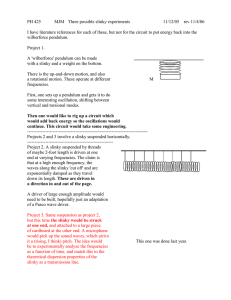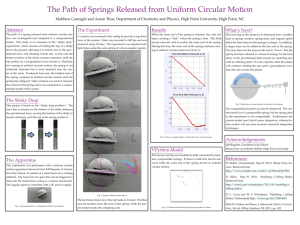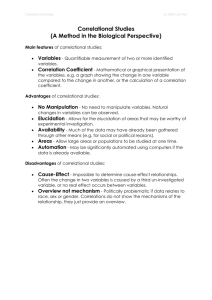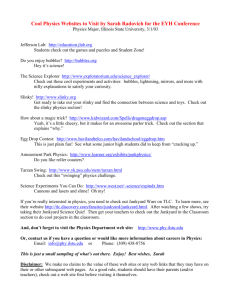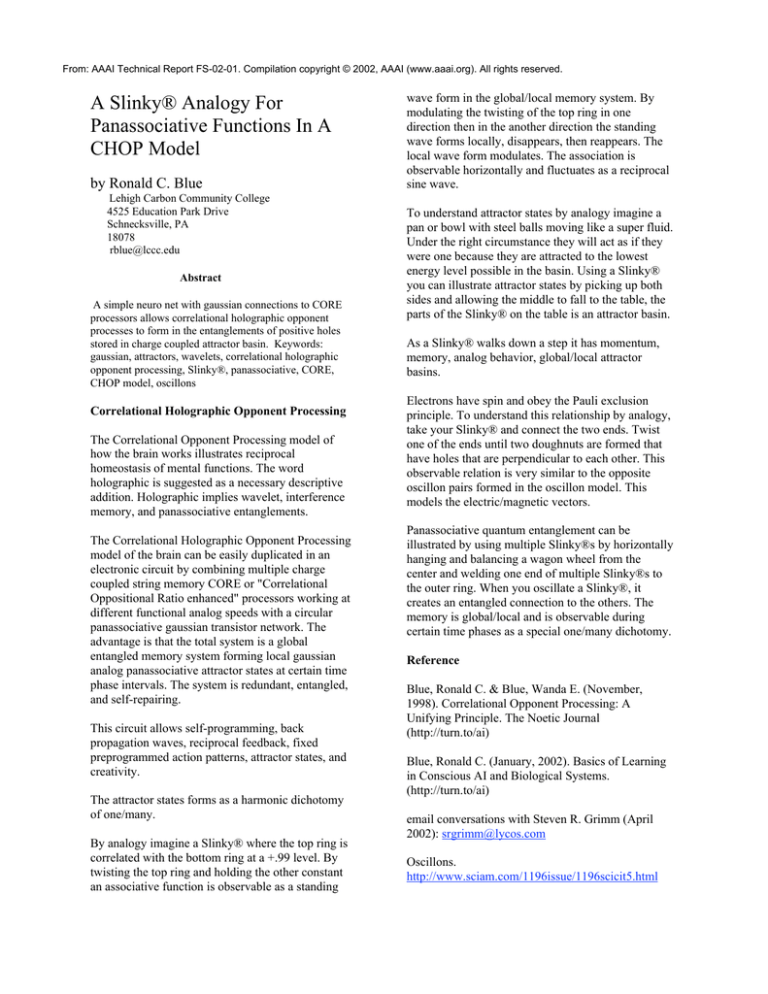
From: AAAI Technical Report FS-02-01. Compilation copyright © 2002, AAAI (www.aaai.org). All rights reserved.
A Slinky® Analogy For
Panassociative Functions In A
CHOP Model
by Ronald C. Blue
Lehigh Carbon Community College
4525 Education Park Drive
Schnecksville, PA
18078
rblue@lccc.edu
Abstract
A simple neuro net with gaussian connections to CORE
processors allows correlational holographic opponent
processes to form in the entanglements of positive holes
stored in charge coupled attractor basin. Keywords:
gaussian, attractors, wavelets, correlational holographic
opponent processing, Slinky®, panassociative, CORE,
CHOP model, oscillons
Correlational Holographic Opponent Processing
The Correlational Opponent Processing model of
how the brain works illustrates reciprocal
homeostasis of mental functions. The word
holographic is suggested as a necessary descriptive
addition. Holographic implies wavelet, interference
memory, and panassociative entanglements.
The Correlational Holographic Opponent Processing
model of the brain can be easily duplicated in an
electronic circuit by combining multiple charge
coupled string memory CORE or "Correlational
Oppositional Ratio enhanced" processors working at
different functional analog speeds with a circular
panassociative gaussian transistor network. The
advantage is that the total system is a global
entangled memory system forming local gaussian
analog panassociative attractor states at certain time
phase intervals. The system is redundant, entangled,
and self-repairing.
This circuit allows self-programming, back
propagation waves, reciprocal feedback, fixed
preprogrammed action patterns, attractor states, and
creativity.
The attractor states forms as a harmonic dichotomy
of one/many.
By analogy imagine a Slinky® where the top ring is
correlated with the bottom ring at a +.99 level. By
twisting the top ring and holding the other constant
an associative function is observable as a standing
wave form in the global/local memory system. By
modulating the twisting of the top ring in one
direction then in the another direction the standing
wave forms locally, disappears, then reappears. The
local wave form modulates. The association is
observable horizontally and fluctuates as a reciprocal
sine wave.
To understand attractor states by analogy imagine a
pan or bowl with steel balls moving like a super fluid.
Under the right circumstance they will act as if they
were one because they are attracted to the lowest
energy level possible in the basin. Using a Slinky®
you can illustrate attractor states by picking up both
sides and allowing the middle to fall to the table, the
parts of the Slinky® on the table is an attractor basin.
As a Slinky® walks down a step it has momentum,
memory, analog behavior, global/local attractor
basins.
Electrons have spin and obey the Pauli exclusion
principle. To understand this relationship by analogy,
take your Slinky® and connect the two ends. Twist
one of the ends until two doughnuts are formed that
have holes that are perpendicular to each other. This
observable relation is very similar to the opposite
oscillon pairs formed in the oscillon model. This
models the electric/magnetic vectors.
Panassociative quantum entanglement can be
illustrated by using multiple Slinky®s by horizontally
hanging and balancing a wagon wheel from the
center and welding one end of multiple Slinky®s to
the outer ring. When you oscillate a Slinky®, it
creates an entangled connection to the others. The
memory is global/local and is observable during
certain time phases as a special one/many dichotomy.
Reference
Blue, Ronald C. & Blue, Wanda E. (November,
1998). Correlational Opponent Processing: A
Unifying Principle. The Noetic Journal
(http://turn.to/ai)
Blue, Ronald C. (January, 2002). Basics of Learning
in Conscious AI and Biological Systems.
(http://turn.to/ai)
email conversations with Steven R. Grimm (April
2002): srgrimm@lycos.com
Oscillons.
http://www.sciam.com/1196issue/1196scicit5.html

